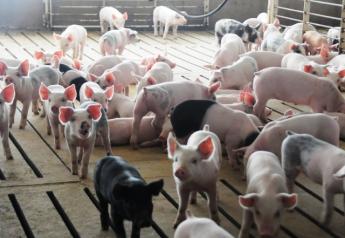Biosecurity: No ‘One Size Fits All’
No ‘One Size Fits All’
Each farm is different in terms of management and facilities, so there’s no blanket approach to biosecurity. The first step is awareness, which has increased in recent years. Biosecurity protocols have advanced along with the industry’s knowledge of how diseases spread, but new technologies are still needed.
Prevention of disease outbreaks saves animal lives and money, says Joe Zulovich, Extension assistant professor and commercial agricultural engineer/livestock housing systems at the University of Missouri. Training staff and putting protocols in place can prevent or reduce losses.
“The first step is to assess risks by reviewing workflow and traffic flow across farm and barn boundaries, Zulovich says. “Biosecurity begins with creation of ‘clean zones’ and ‘dirty zones.’”
He adds that livestock producers should create clearly defined boundaries inside and outside of the farm to prevent visitors and workers from carrying disease directly into areas where animals live.
“While we don’t have all the answers, research has already told us much about the risk of cross-contamination through transport practices,” says the National Pork Board, in its article on biosecurity best practices. “Contaminated boots, clothing, tires, undercarriages, trailers, shovels, sorting panels and people’s clothes are all potential risks.”
Factors to Watch
“We never used to think of feed as a major risk – we knew it could be contaminated but we were concerned with salmonella, molds or spoilage,” Pitkin says. “Now that we understand some pathogens, like PED or certain isolates of PRRS, can be in the feed longer, new technologies are coming to the industry in terms of treating, storing or processing feed differently. Other technologies are yet to be determined, with that route of transmission gaining more attention.”
She adds that producers have more disinfectants now compared to 10 years ago: “Different disinfectant technologies give producers a wider range of how [these products] work on certain surfaces and with different pathogens.”
In addition, Pitkin believes the industry is taking a more holistic approach to herd health and biosecurity by looking at the combination of pathogens on the farm, rather than each one separately. There’s also more emphasis on keeping pathogens out of buildings with filtration systems.
It’s always better to focus on segregation as opposed to decontamination,” she says.
It Comes Back to Communication
Farm owners who have done a good job of communicating the importance of biosecurity with their staff members have made an investment in protecting their farms. They ask questions like:
• How do I incorporate protocols to prevent transmission in the most cost-effective manner?
• How do I allow my employees to accomplish these tasks in the easiest and most efficient way possible?
• How do I set up my facilities in a way that allows my employees to do their jobs effectively with biosecurity in mind?
• How do I set up a two-stage loading system, with gates strategically placed, to ensure pigs cannot re-enter the building?
• What changes are needed in the load-out area that allow my employees to safely accomplish needed moving and load-out tasks?
• How do I keep from contaminating the shower area?
• Do I have fumigation rooms that make it easy for people to disinfect supplies to keep them separated from the main herd and allow for adequate down-time?
“Make sure you train your employees,” says Teng Lim, who is also in the engineering department at the University of Missouri. He and Zulovich received a USDA Extension Education grant, which was used to offer a series of biosecurity workshops in Missouri. "Details matter.”
Lim urges producers to establish a written plan for training and response. “Test and audit the plan on a regular basis,” he says.
“Successful biosecurity measures include processes and procedures that have two or three stop-points,” Pitkin says, “But they also make implementation and the processes to conduct them as seamless and as flawless as possible.”
Spreading the Word
Pitkin is passionate about biosecurity, and knows how important it is for the company as well as the industry.
“If the things I suggest prevent one farm from having a disease break, it feels like a great accomplishment because I truly believe in the concept of prevention,” Pitkin says. “We’d rather not have to deal with a disease than have to treat for it. Whatever farms can do to protect themselves is critical to the health and success of the operation.”
Cultivating a culture of sound biosecurity practices ultimately means better health for pigs, and more profit opportunities for producers.
Related Articles:
Biosecurity: Facing the Invisible Enemies
Pork Industry Hopes for the Best, Plans for the Worst
Transportation Biosecurity: Control What You Can







